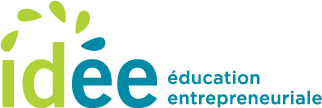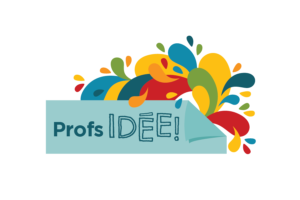L’accompagnement est la clé de voûte au succès d’une transformation réussie de votre école. Offrant un processus rigoureux, méthodique et flexible, nous partons du principe que chaque école est unique et qu’aucune ne part de zéro. Notre équipe personnalise la démarche en fonction de chaque environnement éducatif et de ses besoins pour que votre établissement devienne une école communautaire entrepreneuriale. L’école et sa communauté forment une alliance de sens pour, qu’ensemble, elles portent fièrement leur projet éducatif.
Empowering oneself, being entrepreneurial and creating innovation
The idea of learning to empower oneself corresponds to a large extent to what others define as self-entrepreneurship. This means learning to know and take charge of oneself, and acquire self-confidence. We thus find there a very important notion of autonomy. The child, youth or adult must be able to remain stimulated, be proactive and become responsible in front of his/her own needs. Learning to know oneself (self awareness) is fundamental here in order for the student, regardless of his/her age, to progressively come to assume with confidence self-accountability in front of his/her needs, but also in front of his/her future in society. Learning to empower oneself includes the idea of learning to learn by oneself.
This is different than the expression learning to be entrepreneurial which refers more to what is usually called desire to undertake new things or entrepreneurial spirit.
The desire to undertake represents the ability of the student to identify a need in her/his surrounding (more or less immediate community), to imagine a response to this need and to take action in order to implement this response. In regards to the ECEC vision, the desire to undertake is equivalent to making each and every child (or youth and adult student) more entrepreneurial and innovative.
The entrepreneurial spirit (with the entrepreneur profile) represents the ability to develop a vision in front of an unfulfilled need, to imagine the process allowing to design a solution (a service, a product or an event) and to make this solution available by means of a business. Additionally, the entrepreneurial spirit requires the capacity to apply marketing strategic principles (sale, distribution), to demonstrate measured audacity towards risk and to show vivacity of the entrepreneurial spirit to counter contingencies, resistances and competition.
The ECEC offers to create learning situations favouring the development of these specific “senses” of desire to undertake and entrepreneurial spirit. The ECEC has a program (CELP + PEACE) allowing to learn how to demonstrate developmental strategies, management strategies and entrepreneurial creativity. It overall leads to an observable innovation: a product, a service or an event.
It goes without saying that the desire to undertake and the entrepreneurial spirit both require an excellent capacity of self-entrepreneurship.
The idea of learning to create innovation in school implies the organization of pedagogy in a way that boost creativity so that the combination of new ideas generating a concrete conscious entrepreneurial innovation can be produced in the head of children of primary level, youth of secondary level and adult students. This assumes that such innovation be favourable to a collective well-being. This type of innovating entrepreneurship is socially responsible. It contributes to the emergence of a viable economy and a viable future for human communities. This entrepreneurial process takes into consideration the ethical dimension.
The conscious entrepreneurial education and the pedagogy that drives creativity for innovation continuously foster the development of ideas and multiple connections between them. Children, youth, as well as adult students acquire these learning in the classroom and also, in certain occasions, outside the classroom, in their community near the school. The particularity of this way of learning is that it results from various authentic contexts existing in the socio-economical living environment of the school, which allows very regularly the multiplication of direct connections between the school (educators, students) and the community (people, groups, organizations, entrepreneurs).

Rino Lévesque











0 Comment
Would you like to join the discussion? Feel free to contribute!